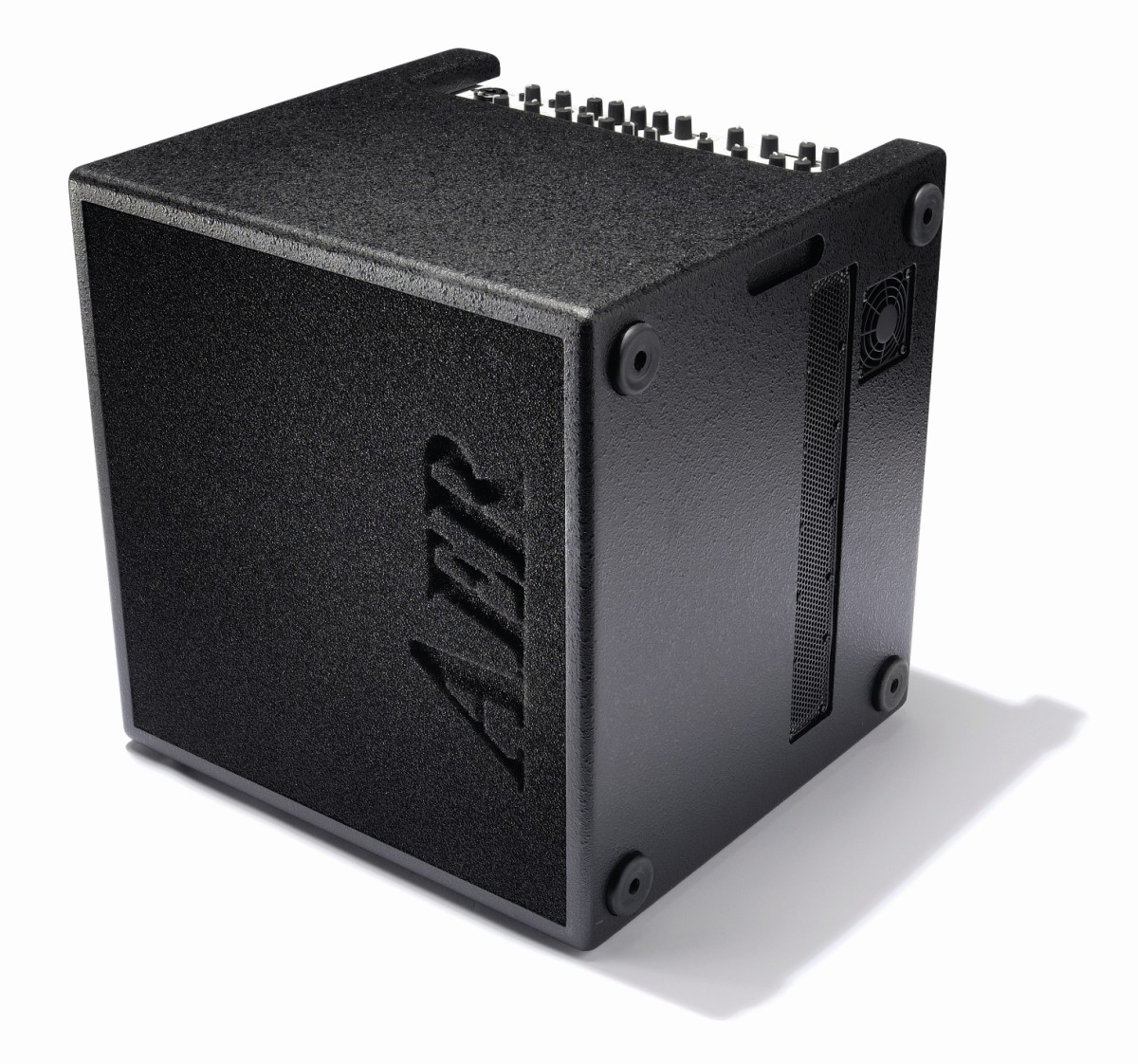MusicRadar Verdict
An expensive indulgence but one that could pay off for the serious acoustic or electric upright player. Huge sound from a tiny box and it's easy to use too.
Pros
- +
Easy to handle. Big sound from a compact design. Tremendously versatile.
Cons
- -
Push on/push off switches can become noisy. It's a pros only price.
MusicRadar's got your back
With the popularity of acoustic-styled bass guitars and electric uprights, it's only natural to see more purposefully designed amplification appear for them.
While there are a number of quality units available, the BassCube 2 offers a higher spec - and a proportionally higher price - aimed at professional players.
Build
Finished in black spatter, the tough birch plywood cabinet is nice and compact with inset side handles and an agreeable weight.
The front grille is covered with a plastic foam insert, which carries the AER logo: it looks more PA speaker than conventional bass amp.
Behind the foam sits a 12-inch Ciare Coaxial speaker that features a one-inch compression driver, ideally suited to handle the extremes exerted by bass frequencies.
With two well-equipped and identical channels the control panel seems busy, albeit laid out logically with clear labelling to make navigation straightforward.
You start by choosing from a range of input options using the mode switch. Each has an assigned LED so you can see immediately which is selected.
The range of choices also reveals just how adaptable this unit is and these run clip, mute, piezo, line, 9V, mic, 48V, E/P (which stands for electret-microphone/piezo pickup).
Alongside these controls are a number of extra rotary controls and switches shared by both channels including a notch filter and comprehensive compressor controls.
The rear panel hosts a plethora of phono connectors for aux in and out, headphones and tuner, plus independent channel DI outputs with pre/post-EQ options and level controls.
There's a third DI that handles both channels at once with its own level control.
Speakon-style connectors are provided for the mains lead as well as for the two input sockets that include jack plug locks for the ultimate in security.
This baby is definitely built to handle all eventualities.
Sounds
There's something about this that immediately fills you with confidence - but then at this price we'd expect nothing less.
Using a standard jack lead is fine but you need a stereo cable if you wish to take advantage of the phantom power facility.
To prevent accidental activation of this feature you have to set the mode switch to line then press down for three seconds. You can also use the same method if using the mic facility.
So, the BassCube could be used with a couple of basses, or a bass and a mic, or a guitar, depending on your personal needs.
This will also handle a regular bass guitar with a magnetic pickup with ease but where it really excels is with an acoustic-styled bass guitar or electric upright.
Here the piezo setting enhances the natural sounds and fills it with life and vitality and a tonal range that will delight the ears of any player: think ultra clean with solid depth of performance.
Armed with so much variation it's essential to familiarise yourself with this input mode facility as an incorrect setting will not produce the sound qualities for which AER is so well renowned.
The pad switch helps stop active basses from overloading the preamp, then with contour and colour options, plus a healthy EQ complement (that includes a sweepable mid frequency range) there are sounds here for everyone.
Further enhancements come with the non-channel specific controls that adjust the tweeter level, the frequency for the mid controls, effects saturation and the highly effective compressor.
There's a lot to consider here, so knowing the amp inside out and of course having a good idea of the sound you want, is essential.
Summary
To say that the BassCube 2 is versatile is vastly underselling the potential of this creatively designed combo.
Small yet purposeful, it's a bass amp designed primarily with acoustic upright basses and bass guitars in mind, although it can handle pretty much whatever you throw at it.
And the compact nature of this unit belies the power and performance qualities that it can deliver with ease.
The price is obviously significant but for gigging, recording and rehearsal use this is a very professional package that offers reliability with a huge range of options.
For the acoustic player who needs quality reproduction of both an upright bass and a bass guitar this has to be one of the best options around.
AER knows what's required so if it's expertise you want, then it's worth digging very deeply into your pocket.
Guitarist is the longest established UK guitar magazine, offering gear reviews, artist interviews, techniques lessons and loads more, in print, on tablet and on smartphones Digital: http://bit.ly/GuitaristiOS If you love guitars, you'll love Guitarist. Find us in print, on Newsstand for iPad, iPhone and other digital readers
“A synthesizer that is both easy to use and fun to play whilst maintaining a decent degree of programming depth and flexibility”: PWM Mantis review
“I feel like that song had everything we needed to come back with”: Bring Me The Horizon’s Lee Malia on Shadow Moses, its riff and the secrets behind its tone, and why it was the right anthem at the right time
“I said, ‘Are we sure we can write a song about death?’”: The story of Mike + The Mechanics' classic No.1 The Living Years











